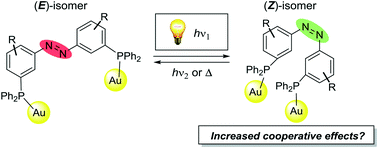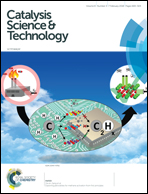Bimetallic gold(i) complexes of photoswitchable phosphines: synthesis and uses in cooperative catalysis†
Abstract
The first photoswitchable bimetallic gold catalysts based on an azobenzene backbone have been synthesized and their catalytic properties have been investigated. In the intramolecular hydroamination reaction, the reaction rate proved to be dependent on the E- or Z-configuration of the catalyst used, with the Z-isomer being significantly more active. These results suggest that a possible cooperative effect between the two metals operates in this reaction.



 Please wait while we load your content...
Please wait while we load your content...